Gulson Road (Coventry) Sewer Diversion (2019)
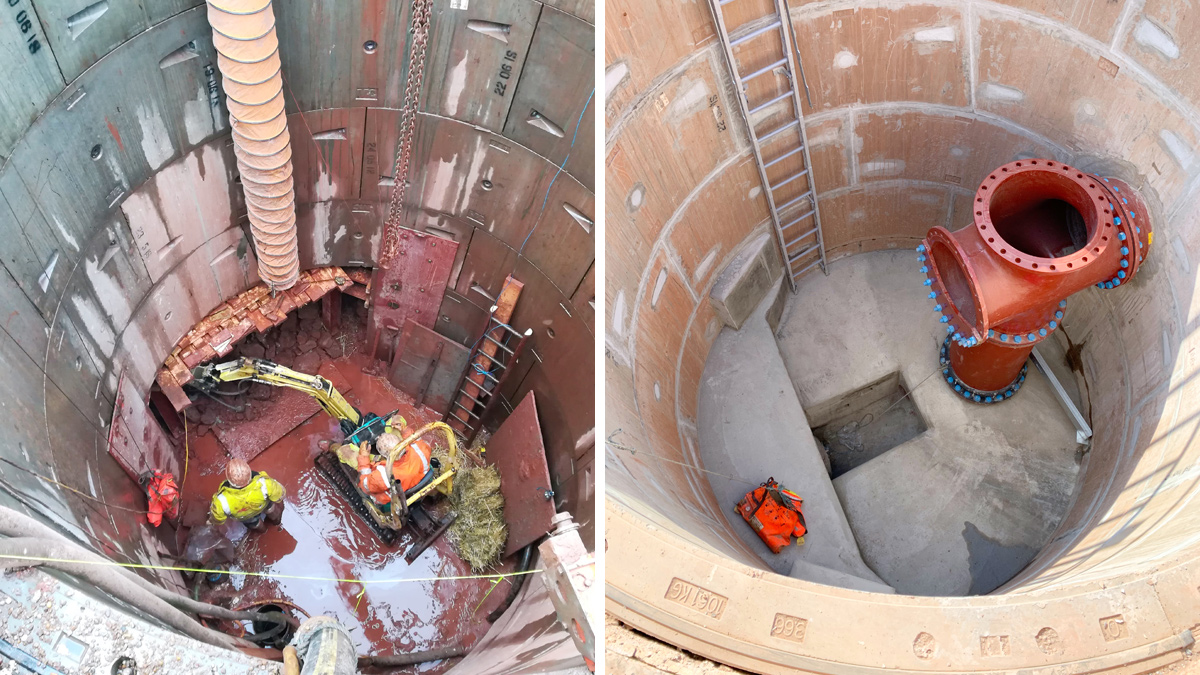
(left) Initial timber heading works and (right) completed backdrop shaft - Courtesy of nmcn PLC (now Galliford Try)
As part of the ongoing growth of Coventry University, an existing builder’s merchant yard situated off Gulson Road provided a developer with the ideal city centre plot to construct an extensive eight-storey student accommodation building. The brownfield site redevelopment required an existing Severn Trent owned trunk sewer to be diverted prior to the construction work commencing on the 460 room student accommodation complex. Severn Trent appointed nmcn PLC (now Galliford Try) as design and build framework contractor to investigate, design and build the required diversion.
Project summary
Under section 185 of the Water Industry Act (1991), Severn Trent were requested to relocate the existing 1050mm x 700mm egg shaped trunk sewer which conveys up to 900 l/s of combined water flows during storm events and discharges to the nearby Ø3.05m Sherbourne Valley Tunnel draining the majority of Coventry City Centre towards the Finham Sewage Treatment Works.
Following detailed ground penetrating radar and trial holes to trace and map the intricate web of existing underground assets, it quickly became apparent that diverting the large sewer would require a major effort. Outline design work quickly ruled out any open cut solutions due to the requirement for significant road closures and service diversion works and led the nmcn design team to think deep. With the complexities of infrastructure works associated with congested city centre environments and the tight deadlines set by the developer, nmcn were quick to engage their specialist supply chain and worked collaboratively with Active Tunnelling and COWI to start designing a bespoke solution to this complex tunnelling problem.
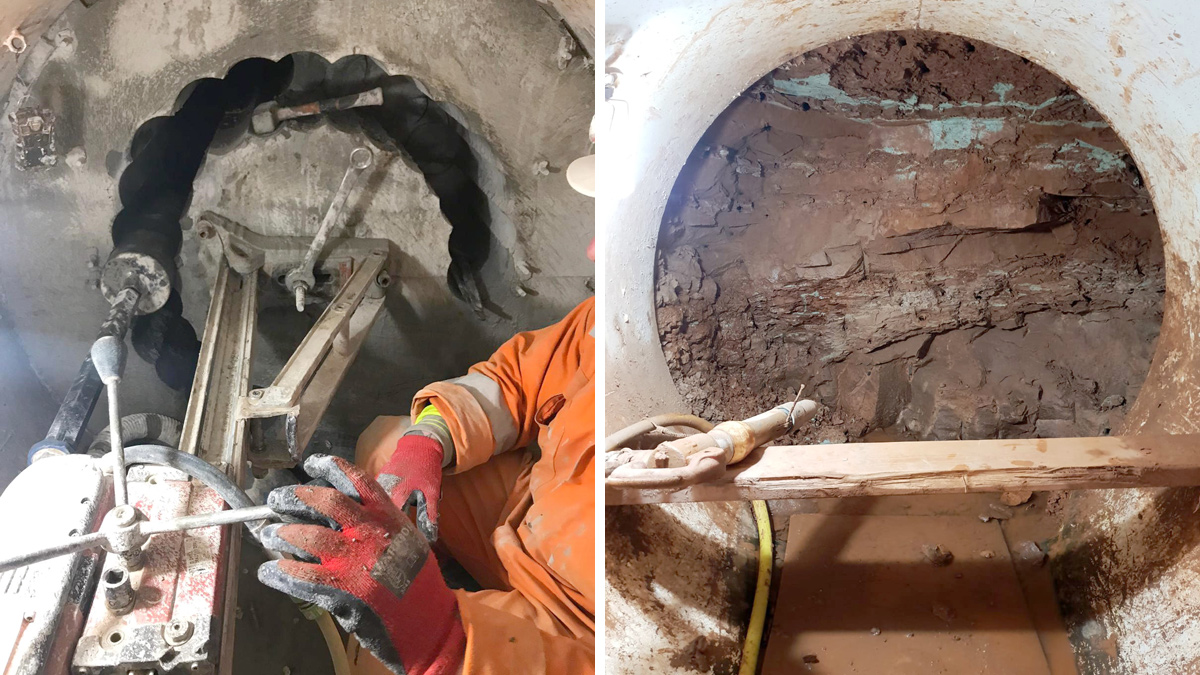
(left) Coring through RC portal into tunnel and (right) open faced tunnelling shield – Courtesy on nmcn PLC
Design complexity and planning & communication
As design & build contractor for the £600k sewer diversion project, nmcn facilitated collaborative design reviews with Severn Trent Water, Active Tunnelling and COWI, and developed a solution to backdrop the trunk sewer into a 7m deep Ø3.66m shaft where a new tunnelled connection into the Sherbourne Valley Tunnel could be constructed away from the developer’s site.
An 11m long, 2m wide and 1.5m high timber heading under a live carriageway was required to expose the outside of the existing 8m deep tunnel, necessitating a Highways Technical Approval through Coventry City Council.
As part of the wider stakeholder management plans, XDisp Assessments and buried services structural integrity checks for the cast iron gas mains over the heading were subject to technical review by Cadent Plant Protection. The design required a complex reinforced concrete strengthening portal to be cast on the extrados of the existing Ø3.05m tunnel in order for a one metre diameter opening to be stitch drilled for the connecting pipework.
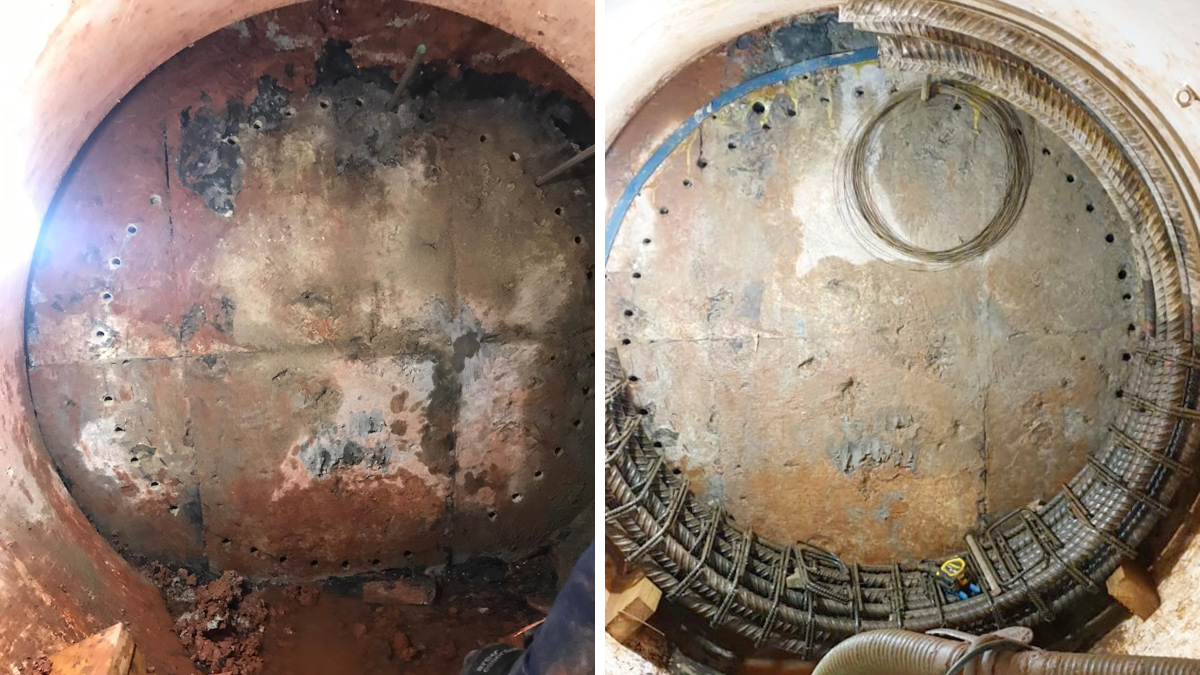
(left) Dowelling extrados of Sherbourne Valley Tunnel and (right) reinforcement cage for Sherbourne Valley Tunnel portal – Courtesy on nmcn PLC
COWI developed a detailed ground model for ovalisation analysis (Duddeck & Erdmann continuum model) and undertook stress checks on the cross sectional & radial joints, bolt holes and packer compression checks on the existing 3.05m diameter tunnel. Access into the tunnel is a highly dangerous environment due to the variable flows (up to 12m3/s) and presents a high risk confined space entry arising from the foul sewerage.
A temporary sectional sealing plate was designed to be fitted within the timber heading to isolate flows from the tunnel should alarms be triggered from the flow monitoring equipment. The entirety of the RC portal and coring works were undertaken within the safety of the heading avoiding all entry into the tunnel.
A notable famous previous entry into Coventry’s secondary identical Ø3.05m Sowe Valley Tunnel was to film (prior to flows being turned) the underground Mini car chase from the original 1969 Italian Job!
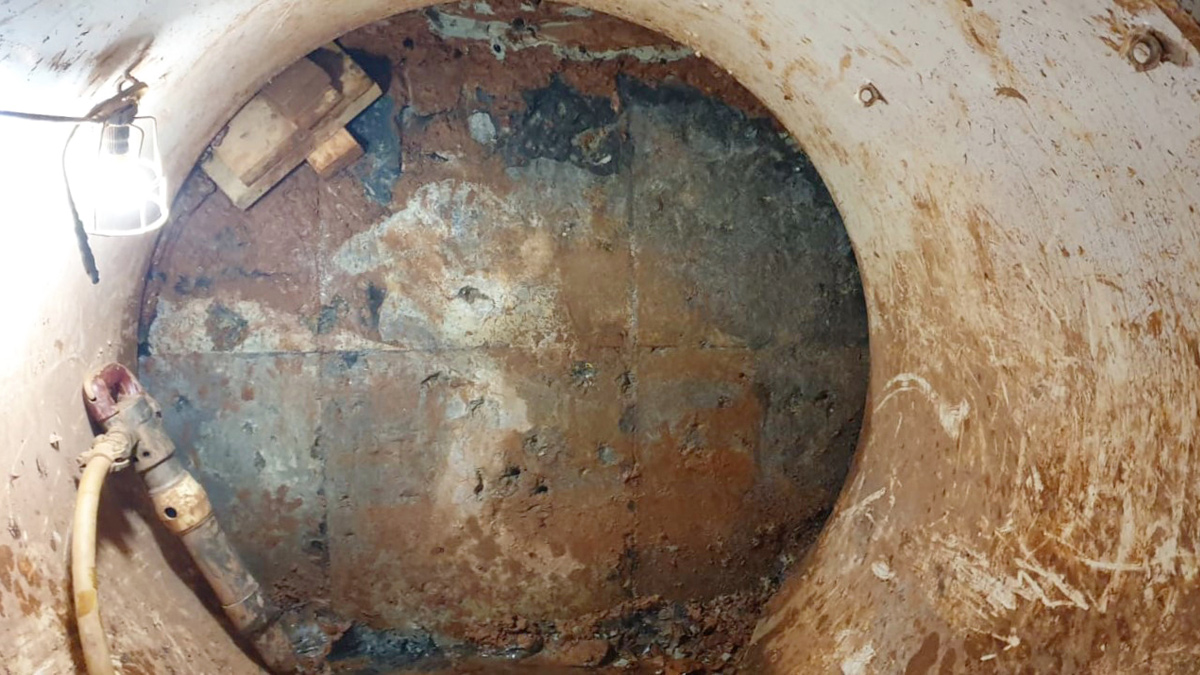
Exposed Sherbourne Valley Tunnel extrados – Courtesy on nmcn PLC
Safety
Initial ground investigation boreholes provided an incomplete picture of the timber heading working environment, as discovered when unforeseen, extremely weak, completely weathered mudstone bands lead to large amounts of ground water ingress within the mainly strong sandstone formation. Despite the use of anti-washout cement and grout lances, the face of the heading could not safely be secured due to the washout rate of the mudstone bands and lead the project team to take the decision to review the tunnelling methodology. nmcn and Active Tunnelling worked in partnership to overcome the issues and quickly produced a re-design to complete the remainder of the tunnelling operations by changing tunnelling techniques to an open faced, shielded Ø1200mm pipe jack. This provided a safer working environment on site and continued to promote the excellent health and safety practices both companies strive to achieve.
Encouraged and motivated by the safety culture, nmcn also organised an on-site mock review of Design Risk Assessments and Risk Management Plans for Severn Trent Graduate and Apprentices designers as part of their ongoing training.
Due to the inherent danger of the high risk confined spaces within the deep shaft and tunnel connection, future operation and maintenance access points were designed exceeding the Severn Trent specification to additionally include integral fall prevention secondary gridding. Rodding and jetting inspection points for the backdrop pipework have also been installed at ground level to further reduce the need of entering the shaft on completion.
Project management
By incorporating the requests of the developer to fast track the sewer diversion programme, nmcn utilised collaborative planning to identify the critical sequences of works and efficiently coordinated CDM areas within the site. This enabled the developer’s construction activities to take place simultaneously with minimal disruption, culminating in nmcn’s phased demobilisation off site by sharing welfare and office facilities.
Gulson Road (Coventry) Sewer Diversion
- Client: Severn Trent
- Design & build contractor: nmcn PLC
- Specialist consultant: COWI
- Tunnelling sub-contractor: Active Tunnelling Ltd
- Tunnelling consultant: BSP Consulting
- Specialist Survey & CCTV provider: CPS Drainage Solutions
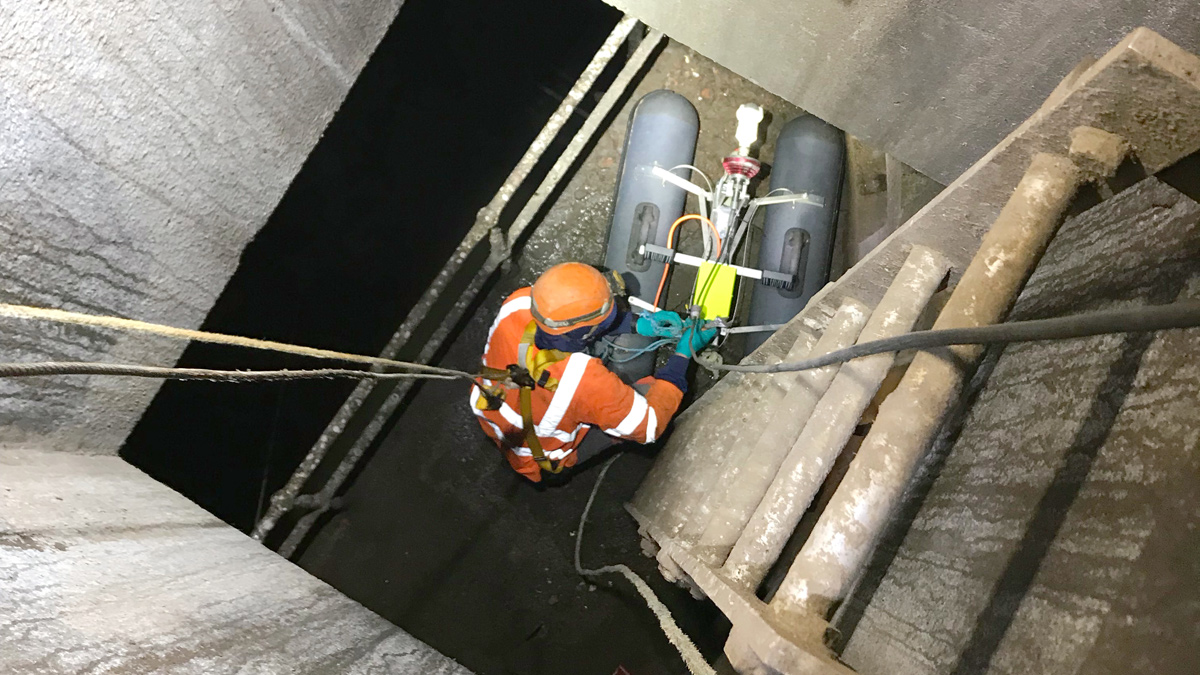
Bespoke floating rig for existing tunnel survey – Courtesy on nmcn PLC
Innovation
A completely bespoke approach was required to safely prevent the existing tunnel flows from breaching through the portal should a storm event occur during construction and consisted of a lightweight temporary timber sealing plate reinforced by seven steel PFCs that could quickly be assembled on the RC tunnel portal on pre-fitted anchor bolts. Further innovations on site included a trial of a 3D SLAM mobile point cloud scanner to capture the required data for as-built drawings.
Project completion
The project was completed on site with no health and safety or environmental lost time incidents and was awarded the 2019 West Midlands Small Project Merit Award by the Institution of Civil Engineers.



